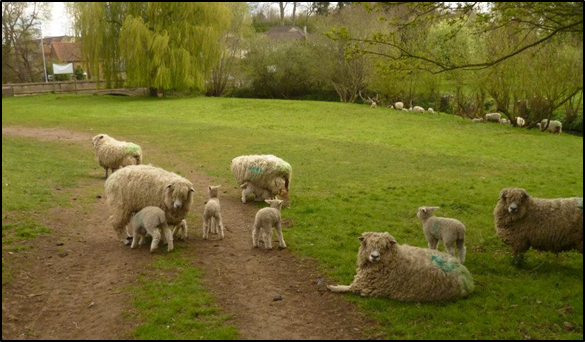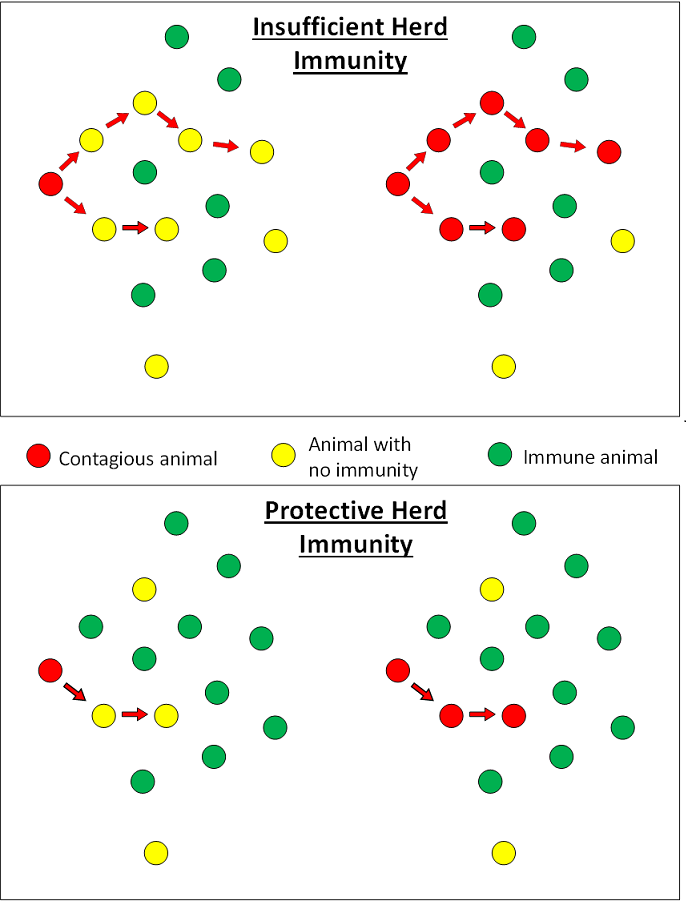BiteSized Immunology: Pathogens & Disease

Viruses versus vaccines: the economics of herd immunity
Towards the end of 2011 some farmers in Northern Europe reported reduced milk yields and some animals not making the expected weight at slaughter. The impact had been notable but not dramatic and the reason was unknown. With the coming of spring 2012, the farming community was looking forward to lambing and calving season. But on a small number of farms, a potentially devastating situation began to unfold. Healthy, pregnant animals unexpectedly had abortions or had stillborn offspring with fused limbs, malformed bodies, and misshapen heads. The culprit: Schmallenberg virus (SBV). As the year progressed, more and more farms across Europe and the UK reported SBV-related abortions, some up to 20% loss of the next generation.
SBV, in a similar manner to Zika virus, causes foetal abnormalities when the mother becomes infected during the early stages of pregnancy. Over the course of around 2 years, the virus - spread by biting midges - swept across mainland Europe and the UK, infecting most farms (Figure 1). An infected midge would be blown by the wind to a new farm and bite a naïve animal and spread the virus, which would replicate to large numbers in the animal. A local, uninfected midge would then feed on the animal and become infected itself and fly off to continue the cycle.
The reaction of the scientific community to SBV was unprecedented, with the development and licensing of a vaccine less than 2 years after identification of the virus. Furthermore, the vaccine was shown to be very highly effective in cattle and sheep. Yet vaccine uptake was so low that the 2 manufacturers made profound losses and consequently halted production. Why? The finely balanced economics of modern farming.
Reports of SBV infection decreased throughout 2013 and 2014 and by 2015 the disease seemed to have passed. But, as we move into lambing and calving season in 2017, vets and farmers are again reporting abortions and stillbirths consistent with SBV infection, and the vaccines have gone back into production.

Because we rear sheep and cattle predominantly for meat and milk production, the average UK herds and flocks are completely renewed over a period of 3 and 5 years, respectively. We don’t know the levels of virus circulating in our midge populations since the introduction of the virus, nor do we know the seroprevalence (number of individuals that have antibodies to virus – an indicator of the level of natural immunity with the population) amongst the current livestock. All this means that 5 years after the spread and subsequent decline of SBV across the UK, many farms may have animals with no pre-existing immunity.
So, will farmers begin to vaccinate or perhaps do so on a 3-4 year cycle? Probably not. Although the vaccine is relatively cheap, the economic loss to the farmer (unless rare breeds or high value breeding stocks are involved) is currently not enough to justify immunising an entire flock or herd. Could farmers get away with only vaccinating vulnerable ewes and cows? Economically, that is a question for each individual. Scientifically, whether this will provide sufficient herd immunity to prevent disease establishing even in those immunised animals will come down to a numbers game.
Herd immunity is a critical factor in vaccination. If a population has a high vaccine up-take of >95% then non-vaccinated animals are unlikely to become infected, as the virus will be circulating in low numbers and rarely encounter a non-vaccinated animal. But if vaccine up-take drops below a critical level required for herd immunity, then the virus encounters non-vaccinated individuals more often and can cause an outbreak (Figure 2). Worse still, if a vaccinated animal regularly gets bitten by infected midges the immune system may be unable to cope and the vaccinated animal may succumb to infection.
Whilst these factors are applicable to human and veterinary vaccines, for farmers there are additional complications. The vaccine schedule is already very crowded with many not licensed for concurrent use meaning careful planning is required to allow time between vaccinations. Simply, it may not be practicable to administer the SBV vaccine to at-risk animals with sufficient time to generate a robust immune response prior to them becoming pregnant. Another factor is the fluctuations in midge populations, which alter dramatically over the year. Animal infections are highest during the peak in midge numbers and so farmers may be able to alter their breeding schedule so that the vulnerable stage of pregnancy is out of step with highs in midge numbers.
For SBV we do not yet know the critical level that is required to maintain herd immunity, but without it, or significant changes to the breeding programs, we can expect to see a regular cycle of SBV-associated failed pregnancies on UK farms.

© The copyright for this work resides with the BSI.
